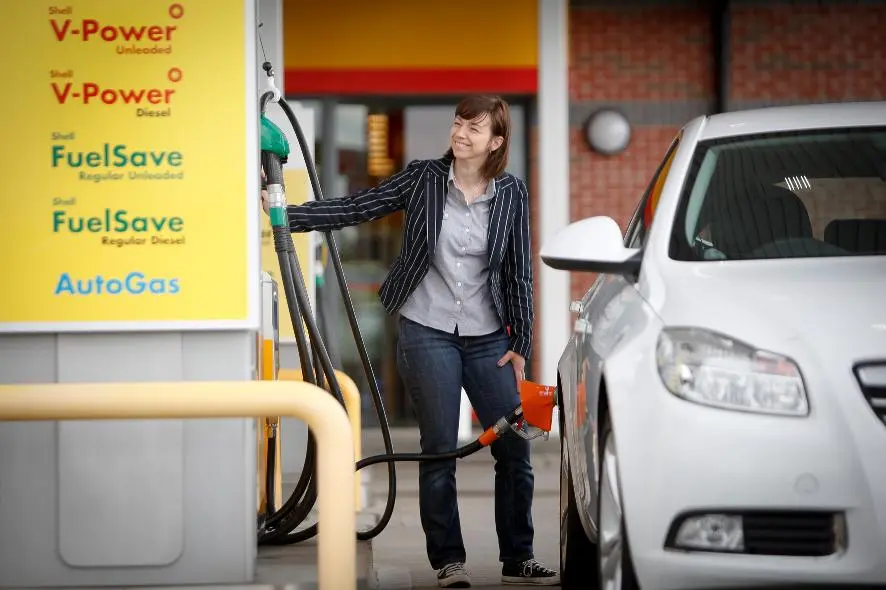The fear of having to disassemble and rebuild your automobile engines since you accidentally used the wrong fuel is a common worry to every diesel car owner who has unintentionally fueled their car. One probable source of operator error is that fuel stations often have green or yellow knobs, thus all of the advertising you see is for standard petrol. Hence, your instinctive minds may draw the link immediately.
However, gasoline and diesel are not always the same, and injecting fuel into a diesel car can soon damage it.
Misunderstandings About Using The Wrong Fuel In Car
Applying the wrong fuel in your car is a classic misunderstanding. Most individuals either have done it themselves or know someone who has. And it shows that a lot of what you thought you knew about it was utterly false. Here are the common fallacies regarding using the incorrect gasoline in your car. A few are racist; some may be costly errors, and maybe one or two were potentially hazardous.
1. You Believe You Can Still Operate Since Petrol Goes On Top Of Diesel.
Petrol and diesel, unlike oil and water, do mix together. This results in a gasoline mixture known as a shandy in the fuel sector. Driving your automobile with any quantity of wrong gasoline might cause engine damage.
2. The Insurance Would Cover You
Misfuelling is not covered by over 90% of Australian insurance providers. Maintenance charges may vary from $400 to over $40,000 for specific models and brands. Review your coverage PDS to avoid unpleasant discoveries. Others with misfuelling health coverage should examine their excesses as most excess might spend more than utilising the services directly.
3. Females Are More Likely To Misfuel.
This is wrong; statistics show that males are the worst violators, with a huge lead of 68 percent.
4. You Operated Your Car With The Wrong Fuel, And The Engine Is Stuffed.
Although most engines are extremely durable, driving with the wrong fuel may cause engine harm. If you have the wrong fuel and drive the car, switch off the engine. Next, arrange for the gasoline to be extracted and the fuel system to be cleansed. Apparent problems may resolve once the engine is running again. Most automobiles you see have no additional difficulties. The car’s lifespan might shorten significantly.
What Will You Do Once You Use the Wrong Fuel In Your Car?
When you realise you’ve made a mistake, put everything on hold. If you’re already loaded your vehicle, immediately stop and seek help. However, it is not suggested that any diesel car be constructed in the last decade. If you’ve begun driving, instantly stop and call for assistance. Even though the gasoline has eroded sections of the diesel system, replacing gaskets and reappraisal is an economical solution.
Bring your automobile to the approved repair centre or the assurance company’s designated repair shop regardless of how far you drive. They do have instruments and know-how to prevent permanent damage. Using the incorrect gasoline typically destroys your car’s protection, making this a costly error. Prevention is better. If your car engine intake doesn’t yet say “diesel only,” ask the maker to add one. Check after inserting the nozzle every time you fill up.
The Signs Of A Misfuelled Vehicle
If you put diesel in a petrol engine or Petrol in Diesel Car Engine, it won’t begin or will start slowly, and an excellent fuel metre would show you why. If it starts, the vehicle might stutter or show various abnormalities.
When you put gasoline in a diesel engine, expect poor efficiency, which will worsen over time. The machine will fail eventually, depending on its condition, construction, and tolerance levels.
How To Avoid Misfuelling
Dealing with a vehicle that has been loaded with the wrong fuel is expensive; the best course of action is to seek measures to avoid it from arising in the first place. Here are a few essential pointers to make it less likely:
Teach your operators to be more careful.
Every driver you hire should be familiar both with the old and new fuel labelling methods, how to tell whether the vehicle they’re driving runs on gasoline or diesel, and how to activate an alarm when it’s time to refill. The greatest thing you could do is to acquire new skills and management. Aggressive drivers create plenty of issues.
Accommodate impeller compressors.
When you drive a diesel vehicle, you may need to put limitations in the filtering necks to avoid smaller fuel nozzles from fitting. It’s not entirely successful since its size mismatch doesn’t completely prevent individuals from cramming diesel nozzles onto petrol filter necks — but this should avoid many fundamental mistakes.
In your vehicle, do not even mix engine varieties.
By guaranteeing that every vehicle in your operation runs on diesel, for example, you may significantly reduce the likelihood of a driver filling up with gasoline by accident. The more engine varieties you combine, the more and more chaos you might create.
Make utilisation restricted gasoline cards.
Some fuel vouchers are restricted to either diesel or gasoline. If you provide each operator with a diesel-specific card, it will remind them what sort of fuel they have to fill particular engines.
Conclusion
Several gas stations have distinct nozzles for unleaded and diesel, and some producers take precautions to avoid wrong fuel accidents. Some vehicles feature multiple fuel nozzle apertures to fit the relevant nozzle type. However, not everyone has acclimated to this approach, so you must use caution.
The greatest approach to prevent using the wrong fuel in car is to be vigilant at all times. Indicate the kind of gasoline you wish to be placed into your vehicle. The normal operating procedure for station staff informs you of the kind of gasoline being poured, allowing you to rectify the staff. To be certain, examine the nozzle as it is put into the gasoline tank. A few additional procedures could save you time and money on repairs.

